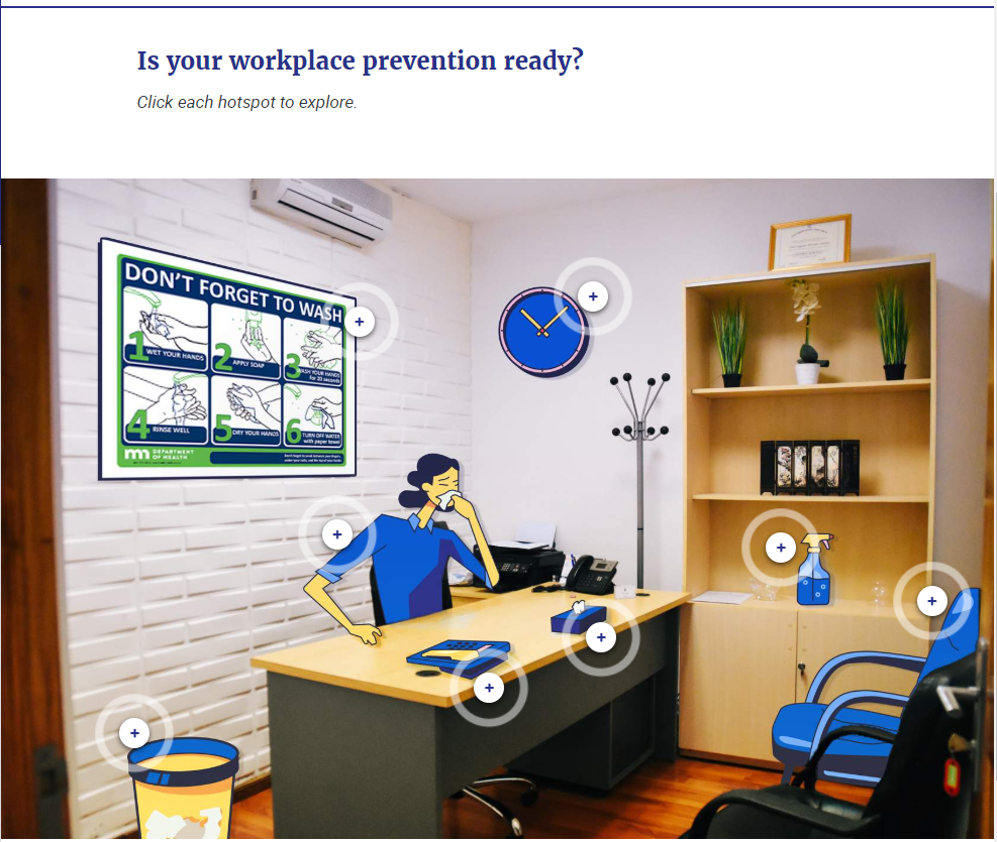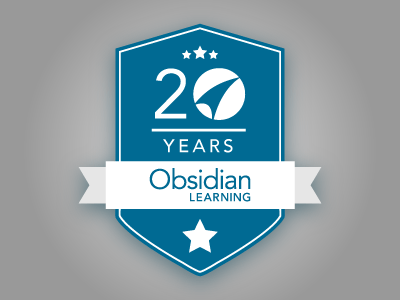In addition to its worldwide impacts on health and the economy, the COVID-19 pandemic has been a huge learning experience for all of us. Though we had likely never heard the terms “social distancing” or “flattening the curve” a few months ago, they are now very much a part of our cultural conversation and global lifestyle. We’ve had to learn about personal protective equipment (PPE) and rates of transmission in order to make the best decisions for our personal wellbeing and that of the surrounding community. We have universally been asked to make certain changes in our behavior, depending on where in the world we live and the impact of the virus in our locality.
As such, the pandemic makes for a fascinating case study in learning, communication, and change management—and is a real opportunity to demonstrate the value of those critical skills while navigating a global crisis. At Obsidian Learning, changing behavior through communication and training is our area of expertise, and doing it all remotely, as is largely required in the current climate, is a specialty. Let’s explore what we see working and how our skillset may come in handy while we make our way through these uncertain times.
In a recent fascinating article in the New Yorker , the author explored the contrast between Seattle’s and New York’s responses to the initial outbreak. Seattle’s leaders adopted the communication strategies outlined in the CDC’s Field Epidemiology Manual including:
- Having a single spokesperson that the public learns to trust—this is important as the information will continue to evolve and change and that can lead to mistrust from the audience.
- Having a single overriding health communication objective (or SOCHO) that is repeated at the beginning and the end of any communication.
- Acknowledging the feelings the audience might be experiencing to validate and establish common ground.
- Valuing transparency right from the beginning. It is important to identify what is known and not yet known and to avoid hyperbole and overpromising. These tenets align well with what we know about adult learners (establish credibility, leverage primacy and recency, link learning to emotion) in the face of cultural and behavioral changes. In addition, we know from learning and change management theory that:
- While emotion is critical to learning (I have to be emotionally invested, I need to feel personal value in the content), too much emotion (e.g., overwhelm, panic as one might experience early in a pandemic) makes it difficult to absorb and retain new information. Anxious, depressed or overwhelmed audiences will need more repetition, gentle emotional validation, and small bits of new information at a time.
- When creating behavior change, new behaviors must be taught multiple times and ideally using multiple ways/media.
- New behaviors must be reinforced and feedback provided.
- Reading dry text is rarely the best way to reach any audience.
When OSHA published its Guidance on Preparing Workplaces for COVID-19 document, Obsidian Learning wanted to help by creating a series of free resources for employers to supplement the documentation. While it is full of really useful information targeting employers who are looking to re-open their businesses, we felt we could help the effort by providing that information in ways more aligned with how adults learn and what we know about managing change. One of the most important pieces of OSHA’s guidance focuses on prevention of infection in the workplace. As businesses begin to re-open and adapt to new ways of doing commerce, reducing employees’ risks of exposure in the first place is of paramount importance. Prevention reduces absenteeism, risks to customers, and negative economic impacts. And of course keeping workers (and therefore their families and communities) safe is simply the right thing to do.
So how can we help businesses take steps to prevent infection? We developed a checklist for employers (based on the OSHA guidance document) to determine whether they are ready to open for business. Since each business is unique, there are blank spaces so employers can customize according to their needs. Click here to download a free copy. Checklists are a familiar, easy-to-use media that promote action steps and can be quickly adapted for changing circumstances. That makes them a good option for this audience and situation. Fitting to one page while keeping it visually interesting is key to usability.
What about the employees? For those workers who use technology like a laptop, tablet, or smartphone on the job, we created a simple, visually interesting, interactive infographic to convey the key points of infection prevention quickly and easily. Click here or click the image to view the interactive infographic.
For those employees who do not use technology throughout the day, consider posters, window decals, and notes by the phone to remind of key messages and reinforce new hygiene practices or work policies.
If you’re in the process of re-opening a business or operating and working at a business in this new pandemic era, you may find yourself evaluating the most effective resources for keeping your team up to speed with the latest prevention procedures. Remember to deeply consider your audience as you think about training and communication resources for your unique circumstances. You will want a consistent set of messages presented in variety of media (posters, email, videos, printed materials, graphics, audio messages) that are easy to access, reference, and follow.
Be sure to provide information in the language your audience speaks best and to take appropriate reading levels into account. If you are unsure of your audience’s reading level (or have a very mixed audience), the American Medical Association (AMA) and the National Institutes of Health (NIH) recommend that patient education materials be no higher than a sixth-grade reading level.
According to the National Assessment of Adult Literacy (NAAL), 30 million adults in US struggle with basic reading tasks. NAAL research suggests that nearly 9 out of 10 adults may lack the skills required to adequately manage their health. ( CDC’s Simply Put- A Guide for Creating Easy to Understand Health Materials ). In other words, make sure your content is simple, meaningful, and easy to implement. And if you need help, reach out to those experienced with communication and training.








